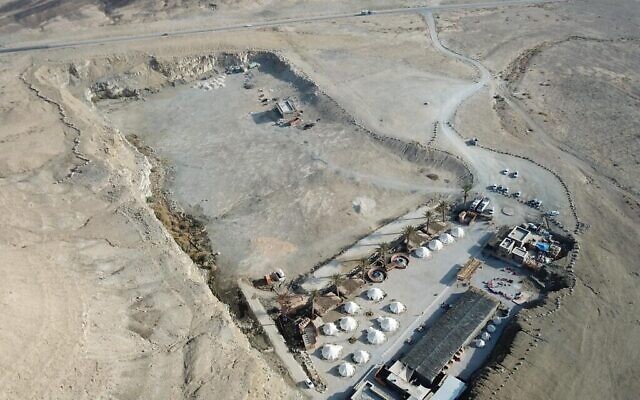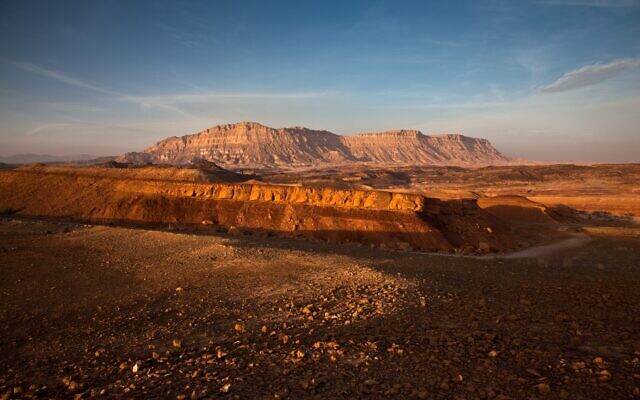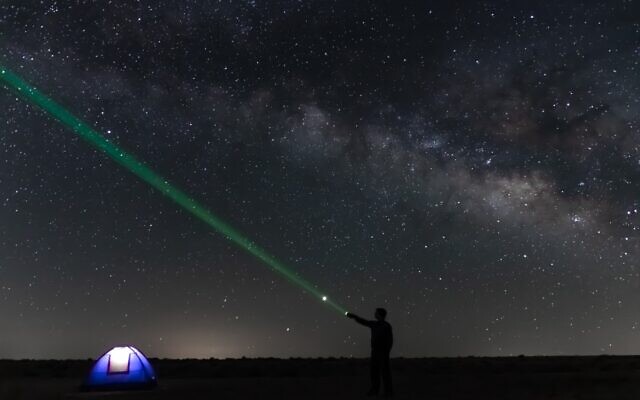Senior scientists from the Israel Nature and Parks Authority and the Environmental Protection Ministry are warning that plans to build a concert amphitheater in the middle of southern Israel’s Ramon Crater nature reserve will cause potentially serious harm to wildlife and almost certainly lead to the revocation of the crater’s prestigious status as an international starlight reserve.
Roni Marom, mayor of the Mitzpe Ramon Local Council, is seeking to implement a plan that was approved a decade ago but never acted upon. The facility would hold 10 shows open to the public each year on nights with a full moon, and another four events for the council.
Temporary stages are to be set up on a 15-dunam (3.7-acre) area of former gypsum quarries, west of Route 40 in an area surrounded by a nature reserve.
Some 1,500 people would be allowed into each show, including artists, technicians and production personnel.
On Monday, Environmental Protection Minister Tamar Zandberg wrote to Marom, asking him to freeze the plan and to look for alternative sites for the amphitheater.
Get The Times of Israel's Daily Edition by email and never miss our top stories
Marom was not available for comment.

The proposed site for the amphitheater, next to Selina’s glamping site. (Courtesy, Lev Hamidbar)
The crater, said Zandberg, was defined by the ministry as one of the most ecologically sensitive sites in the country.
She said she had asked INPA director Raya Shourky to develop a different tourism plan for the site, one that would not harm nature.
Shourky said that the potential damage to wildlife caused by light and noise were far better understood today than a decade ago.
In an opinion attached to Zandberg’s letter, INPA ecologist Noam Lieder said that noise from performances would damage the crater’s natural acoustics and be heard across a 10-kilometer (six mile) radius of the site, with a “harmful acute ecological impact” felt up to three kilometers (just under two miles) away.
A harmful acute ecological effect can impact animals physiologically or behaviorally, even following a one-time disturbance, Lieder explained.
This could see birds such as raptors and ground breeders temporarily abandoning their nests, or the disruption of animal communication used in foraging, reproduction and predator avoidance.
Artificial lighting — which would cast a particularly wide aura on cloudy nights or in conditions of moisture and dust — could rattle the foraging, reproductive and self-defense habits of nocturnal animals, Lieder went on, and could also disrupt the biological clock of both animals and plants.

The Ramon crater in southern Israel. (Doron Nissim, INPA)
Lieder said that remote sensing from satellites had picked up light pollution generated by events at a nearby glamping site for just a few hundred revelers. That site is next to the area earmarked for the amphitheater.
Amphitheater performances would require six times more lighting, he went on, and yet lighting was not even mentioned in the tender documents for the new facility’s construction.
Environmental Protection Ministry Chief Scientist Noga Kronfeld-Schor added in her written opinion that new research in which she has been involved shows that exposure to low-intensity artificial lighting over time causes “widespread mortality” for desert rodents and “serious harm” to their reproduction.
There was no reason not to assume that such harm would affect many other species within the Ramon crater’s sensitive desert system, she added, and “no justification” for the establishment of an amphitheater.

Stargazing at the Ramon crater in southern Israel. (Yaniv Cohen, INPA)
Tens of thousands of stargazers flock to the crater annually in August to watch the dramatic Perseid meteor shower.
In 2017, following years-long efforts by the INPA and other organizations, the International Dark-Sky Association accorded the site the prestigious status of an international starlight reserve.
It is still the only such reserve in the Middle East, meeting stringent criteria and coming under regular review.
Both the ministry and the INPA worry the council’s plan would lead to this status being removed.


